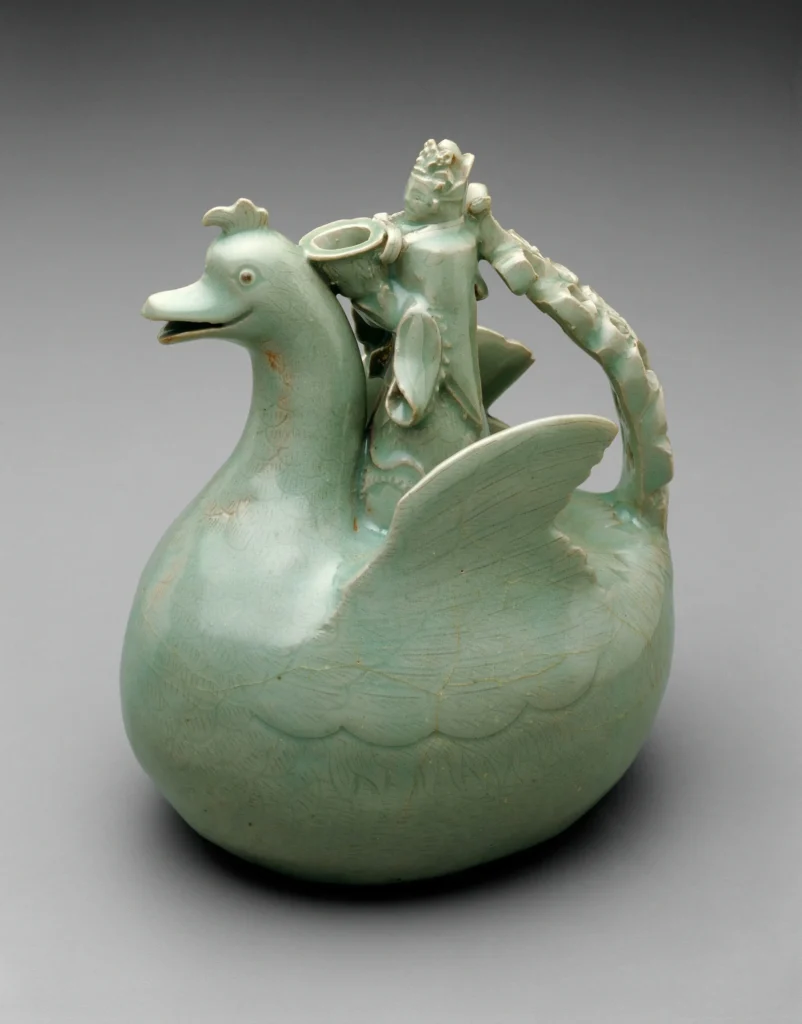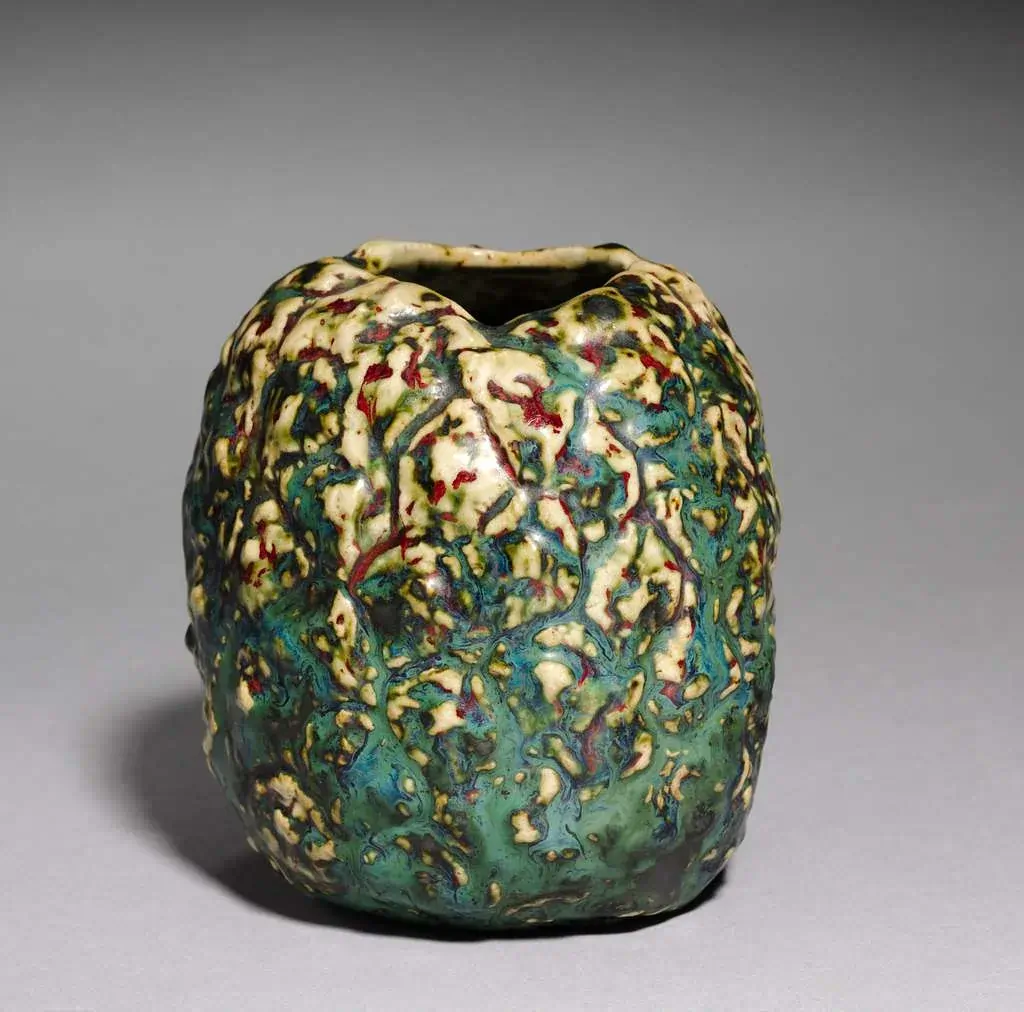Archeological discoveries in Israel reveal that communal dining dates back 300,000 years. The pedestal plate has played a captivating role to raise both food presentation and social status at dining tables throughout this remarkable experience.
The customs and aspirations of each era reflect clearly in dining ware’s evolution. Medieval courts used salt cellars to mark social hierarchy. Augustus III took this further by commissioning an impressive 2,200-piece Swan service in the 1730s. Table settings underwent significant changes as forks appeared in the 17th century, followed by elaborate decorative elements in the 1700s. These elevated serving pieces have adapted to changing times while retaining their timeless appeal. Our story traces the pedestal plate’s evolution from royal courts to modern dining tables.
The Royal Origins of Pedestal Plates
The story of our modern pedestal plates starts with remarkable dining vessels from ancient times. Royal tables of the Merovingian era featured silver vessels that weighed up to seventy-two pounds.
Ancient ceremonial elevated serving vessels
Ceremonial vessels meant more than just serving food in ancient courts – they symbolized power. The wealthy Merovingian nobles showed their status through grand plates instead of palaces. Some of these magnificent vessels reached weights of one hundred and seventy pounds.
Medieval court dining traditions
Formal dining transformed into a display of power and status during medieval times. The French court’s le service à la française became the gold standard for refined dining. Royal feasts followed these remarkable customs:
- Each meal had up to eight grand courses
- Soups and stews surrounded impressive centerpieces in first courses
- Skilled confectioners created beautiful sweetmeats and sugar sculptures
Renaissance innovations in plate design
The Renaissance brought significant changes to how plates looked and worked. Catherine de Medici led many dining advances in the 1500s. Porcelain makers and silversmiths competed to create the finest dinner sets for European courts.
Louis XIV’s court provides the best example of this development. Dining became a daily ceremony where the king ate from dishes made of gold, silver, and silver-gilt. The best goldsmiths created state-of-the-art designs that kept food warm longer.
The Golden Age of Pedestal Serviceware
The Victorian era wrote an extraordinary chapter in pedestal serviceware’s story. The Golden Age after the Civil War brought the most ornate pedestals ever crafted in the United States.
Victorian era elaborate designs
Wealthy Victorians filled their homes with elaborate furniture and richly ornamented rooms. Their drawing rooms and parlors showcased these captivating decorative elements:
- Patterned wallpapers with paintings and prints
- Lush draperies adorning windows
- Multiple pedestals displaying artistic objects
European court influences
American tastemakers drew inspiration from many historical periods. The Renaissance and Egyptian Revival styles, along with Neo-Grec elements, flourished in the late nineteenth century. The Centennial International Exhibition of 1876 in Philadelphia drew about ten million visitors and definitely encouraged this eclectic approach to interior design.
Materials and craftsmanship rise
Materials and craftsmanship reached new heights during this period. Both upscale furniture firms and larger manufacturers created an impressive variety of pedestals. The craftsmanship displayed high-relief carving, colorfully painted accents, and unique elements like flame veneers and marquetry.
The most refined pieces came with distinctive features. To cite an instance, Royal Winton produced serving plates in the 1950s that measured 8 3/4 inches in diameter and stood about 6 inches high. On top of that, some exceptional pieces from this era, like the Louis XVI-style French pedestals of the 1880s, reached an impressive 72 1/4 inches in height.
The pricing of these pieces varied by a lot based on their craftsmanship and materials. Today’s market reflects this range, with pieces selling from $187 to as much as $3,900.
From Nobility to Middle Class Tables
The remarkable change in pedestal plates shows how they made their way from royal dining rooms to our kitchen tables. The story of mass production reveals an interesting balance between artistic value and making these items available to everyone.
Mass production and democratization
The trip to affordable pedestal plates came with its share of challenges. Manufacturers faced a vital choice between quality and cost reduction. They needed to close the gap between $50 handmade pieces and 50-cent mass-produced items. This wider availability opened doors to new design ideas and breakthroughs.
Changes in dining customs
Dining customs went through major changes that affected how people used these serving pieces. These changes included:
- Casual, family-style serving approaches
- Practical, multi-purpose designs
- Stability and function became more important than looks
Modern dining priorities pushed manufacturers to create pieces tough enough for daily use. Current trends show that pedestal plates must look good and work well, especially when people take food in their cars.
New materials and manufacturing techniques
Manufacturing methods changed dramatically as new techniques came along. Some of the most important breakthroughs included:
- Two-piece construction methods that improved stability
- Stronger plastic materials
- More durable glazing techniques
In spite of that, this industrial development brought its own challenges. Mass production led to some trade-offs – thicker casts helped keep food warm and made plates stronger. Traditional craftsmanship gave way to modern manufacturing, but these changes brought unexpected benefits.
Modern Revival and Contemporary Uses
The elegant pedestal plate has made its way back into our homes and celebrations, and I can’t help but notice how much people love them these days.
Vintage collection trends
The vintage pedestal plate market offers amazing variety in both style and value. Italian Renaissance pedestals, especially those from prestigious makers like Deruta and Richard Ginori, sell anywhere from $475 to $22,500. Collectors value these pieces for their intricate details and rich history.
Event styling and tablescaping
Pedestal plates have become key pieces in modern entertaining. We use them in fresh new ways:
- Making multi-level displays for appetizers
- Adding seasonal decorative arrangements
- Setting up elegant drink stations
- Creating candle arrangements with seasonal sprigs
These versatile pieces are now the foundations of tablescaping. Stacking different sizes creates beautiful visual interest, especially when we add seasonal elements under cloches.
Artisanal craftmanship renaissance
A new wave of artisanal craftsmanship has taken hold. The Gien faience from Loire Valley shows off the best of French artisanal excellence, and each piece carries timeless design and historical charm. Modern artisans blend old techniques with new esthetics to create pieces that look beautiful and serve a purpose.
This craft revival has changed our view of these pieces completely. Contemporary makers work with new materials while staying true to traditional methods. Their modern takes often include detailed edging, sophisticated patterns, and versatile designs that fit both formal and casual settings.
Conclusion
Pedestal plates have witnessed the rise of dining customs and artistic expression over centuries. These pieces started as royal status symbols that weighed over 170 pounds. Today, they have become versatile items that enhance modern homes and celebrations.
Mass production has made these elegant serving pieces available to more people, yet they haven’t lost their appeal. A beautiful balance exists between traditional craftsmanship and modern needs. Today’s artisans create pieces that honor historical techniques and meet our entertaining needs.
These versatile pieces prove their lasting value beyond basic function. They display appetizers at casual gatherings and anchor beautiful tables capes with equal grace. The trip from medieval courts to modern homes shows how great design stands the test of time. Each generation discovers new ways to use these timeless pieces while preserving their charm.



